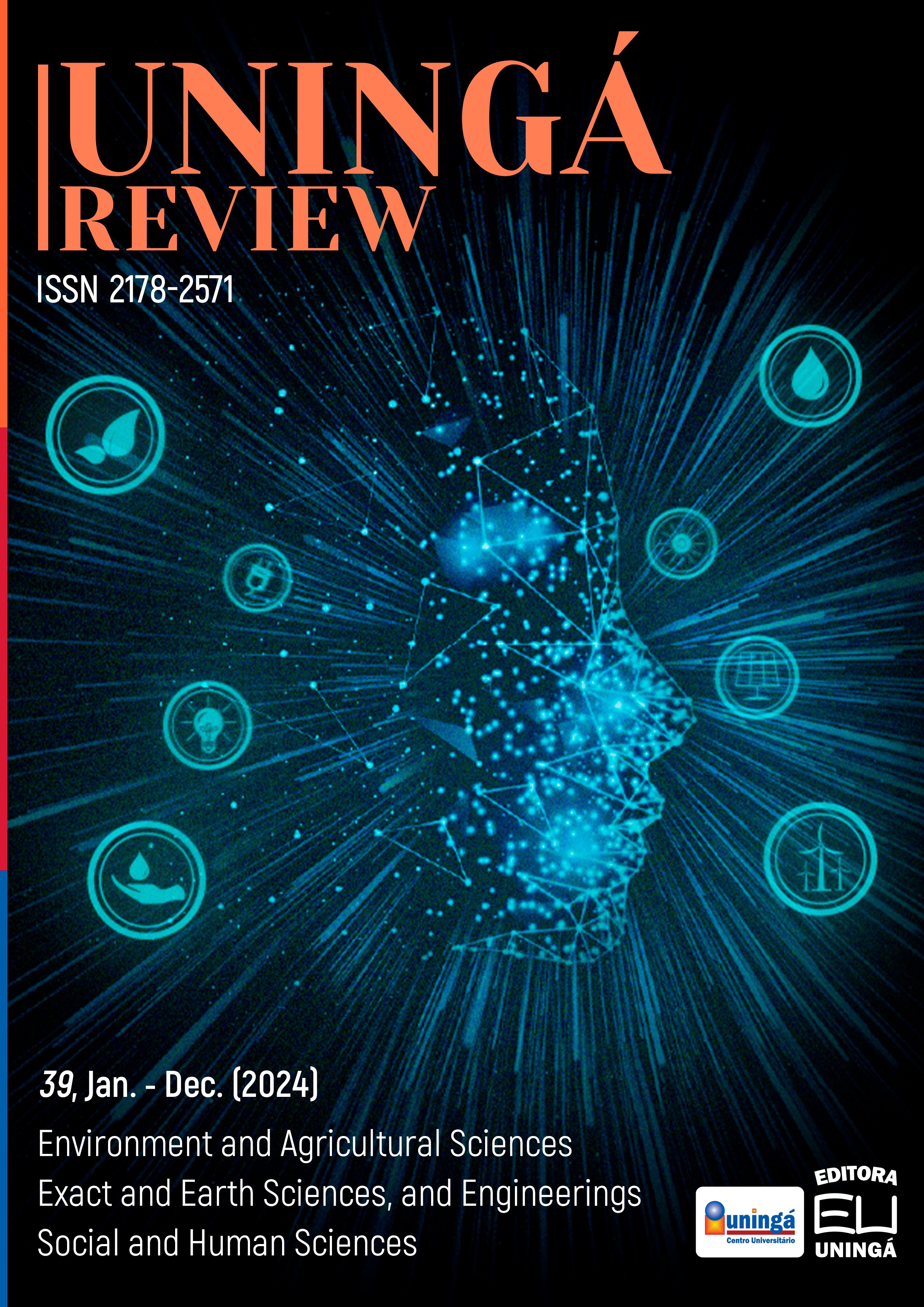Evaluation of the shelf life of minimally processed cassava treated with antioxidant solution and edible cassava starch-based film
DOI:
https://doi.org/10.46311/2178-2571.39.eURJ4642Keywords:
Added value, Chemical stability, Edible film, Manihot esculenta, Shelf lifeAbstract
The practicality of the easy preparation of minimally processed cassava makes this market segment a viable alternative for adding value to the product. However, there is an intensification of the alterations due to physiological deterioration of the roots in storage. In light of this, the aim of this study was to evaluate cooking time, respiration rate and physicochemical properties during the shelf life of minimally processed cassava treated with preservative antioxidant solution, cassava starch-based film-forming solution and the set of antioxidant solution and film, in addition to the control treatment. All treatments were evaluated at zero, three, six, nine, 12 and 15 days of storage under refrigeration at 4 ºC. The following analyses were conducted: colorimetry, browning index, moisture, weight loss, pH, acidity, shear force, compressive force, cooking time and respiration rate. The data were submitted to analysis of variance with repeated measures and comparison of means using Tukey's test at 5% significance. It was found that the treatments with film, preservative solution and both applied to the roots of minimally processed cassava presented the same shelf life as the control treatment. However, cassava treated only with film had higher values in respiration and acidity and although the results showed a significant difference, the preservative solution showed promising results that warrant further research in view of new formulations and tests to assess quality maintenance and storage time.
Downloads
References
Bible, B. B., & Singha, S. (1993). Canopy position influences CIELAB coordinates of peach color. HortScience, 28(10), pp. 992-993. DOI: https://doi.org/10.21273/HORTSCI.28.10.992
Chettri, S., Sharma, N., & Mohite, A. M. (2023). Edible coatings and films for shelf-life extension of fruit and vegetables. Biomaterials Advances, 213632. doi: 10.1016/j.bioadv.2023.213632 DOI: https://doi.org/10.1016/j.bioadv.2023.213632
Daiuto, É. R., Vieites, R. L., Tremocoldi, M. A., & Russo, V. C. (2010). Taxa respiratória de abacate “hass” submetido a diferentes tratamentos físicos. Revista Iberoamericana de Tecnología Postcosecha, 10(2), pp. 101-109.
Fontes, L. C. B., Sarmento, S. B. S., Spoto, M. H. F., & Dias, C. T. D. S. (2008). Conservação de maçã minimamente processada com o uso de películas comestíveis. Food Science and Technology, 28(4), pp. 872-880. DOI: https://doi.org/10.1590/S0101-20612008000400017
Henrique, C. M., Prati, P., & Sarmento, S. B. S. (2010). Alterações fisiológicas em raízes de mandioca minimamente processadas. Pesquisa & Tecnologia, 7(1). Retrieved from http://www.aptaregional.sp.gov.br/index.php?option=com_ docman&task=doc_view&gid=754&Itemid=284
Henrique, C. M., Prati, P., & Sarmento, S. B. S. (2015). Alterações de cor em raízes de mandioca minimamente processadas e embaladas a vácuo. Revista Iberoamericana de tecnologia Postcosecha, 16(1). pp. 129-135. Retrieved from https://www.redalyc.org/pdf/813/81339864019.pdf
Instituto Adolfo Lutz. (2005). Normas analíticas do instituto Adolfo Lutz, (vol.1, 4th ed., 1018 p.) Brasília, DF.
Lorenzi, J. O. (1994). Variação na qualidade culinária das raízes de mandioca. Bragantia, 53(2), pp. 237-245. DOI: https://doi.org/10.1590/S0006-87051994000200013
Menoli, A. V., & Beleia, A. (2007). Starch and pectin solubilization and texture modification during pre-cooking and cooking of cassava root (Manihot esculenta Crantz). LWT-Food Science and Technology, 40(4), pp. 744-747. DOI: https://doi.org/10.1016/j.lwt.2005.12.011
Nitsche, P. R., Caramori, P. H., Ricce, W. D. S., & Pinto, L. F. D. (2019). Atlas climático do Estado do Paraná. Londrina, PR: Instituto Agronômico do Paraná.
Nunes, L. P., Silva, V. M., Souza, E. C. G., Ferrari, C. C., & Germer, P. M. (2021). Stability of jabuticaba flakes obtained by drum drying with cassava starch as additive. Brazilian Journal of Food Technology, 24, e2020085. doi: 10.1590/1981-6723.08520 DOI: https://doi.org/10.1590/1981-6723.08520
Palou, E., López‐Malo, A., Barbosa‐Cánovas, G. V., Welti‐Chanes, J., & Swanson, B. G. (1999). Polyphenoloxidase activity and color of blanched and high hydrostatic pressure treated banana puree. Journal of Food Science, 64(1), pp. 42-45. DOI: https://doi.org/10.1111/j.1365-2621.1999.tb09857.x
Patil, V., Shams, R., & Dash, K. K. (2023). Techno-functional characteristics, and potential applications of edible coatings: a comprehensive review. Journal of Agriculture and Food Research, 14, 100886. doi: 10.1016/j.jafr.2023.100886 DOI: https://doi.org/10.1016/j.jafr.2023.100886
Thuppahige, V. T. W., Moghaddam, L., Welsh, Z. G., Wang, T., & Karim, A. (2023). Investigation of critical properties of Cassava (Manihot esculenta) peel and bagasse as starch-rich fibrous agro-industrial wastes for biodegradable food packaging. Food Chemistry, 422, 136200. doi: 10.1016/j.foodchem.2023.136200 DOI: https://doi.org/10.1016/j.foodchem.2023.136200
Vidigal, M. C., Minim, V. P., Simiqueli, A. A., Souza, P. H., Balbino, D. F., & Minim, L. A. (2015). Food technology neophobia and consumer attitudes toward foods produced by new and conventional technologies: A case study in Brazil. LWT-Food Science and Technology, 60, pp. 832–840. DOI: https://doi.org/10.1016/j.lwt.2014.10.058
Wang, C., Wu, J., Tang, Y., Min, Y., Wang, D., Ma, X., ... & Liu, Z. (2023). Understanding the changes of phenylpropanoid metabolism and lignin accumulation in wounded cassava root during postharvest storage. Scientia Horticulturae, 310, 111765. DOI: https://doi.org/10.1016/j.scienta.2022.111765
Downloads
Published
How to Cite
Issue
Section
License
Copyright (c) 2024 Juliana Cristina Castro, Natália Santos Pretes, Ana Laura Castilho Franco, Anna Beatriz da Silva, Manoel Genildo Pequeno, Rerison Catarino da Hora, Juliana Scanavacca, Cristiane Mengue Feniman Moritz

This work is licensed under a Creative Commons Attribution 4.0 International License.
I declare/we declare that the text submitted here is original, of my own authorship and does not infringe any type of third party rights. The content is my/our sole responsibility. Possible research involving animals and/or human beings is in accordance with Resolution 196/96 of the National Health Council and its complements. I declare that I am/we are in possession of the written consent of patients and that the research and its procedures were timely and adequately approved by the Ethics Committee of the institution of origin. We further declare that all institutional affiliations and all sources of financial support for the work are duly informed. I certify that there is no commercial or associative interest that represents a conflict of interest related to the submitted work. If there is commercial interest, in addition to the technical and academic ones, in the publication of the article, the information will be reported during the text.







































